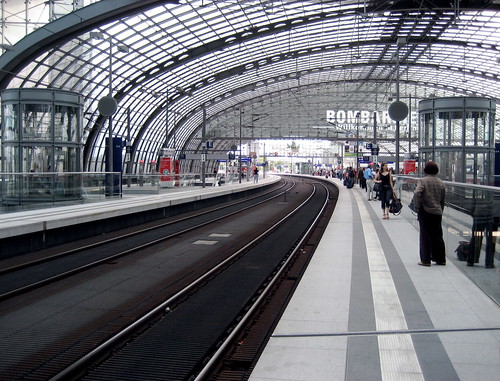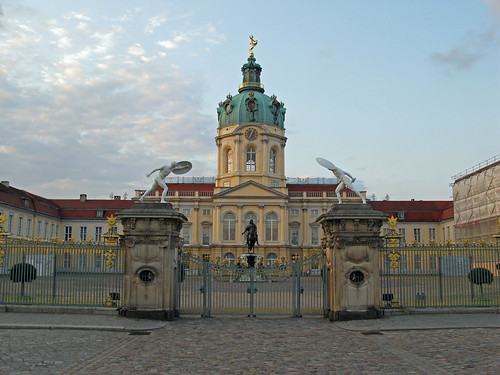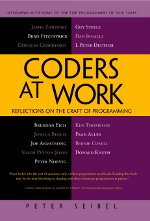

You might not know who Peter is because he s not very visible on Debian mailing lists. He s very active however and in particular on IRC. He was an admin of the OFTC IRC network at the time Debian switched from Freenode to OFTC. Nowadays he s a member of the Debian System Administration team who runs all the debian.org servers.
If you went to a Debconf you probably met him since he s always looking for new signatures of his GPG key. He owns the best connected key in the
PGP web of trust. He also wrote caff a popular GPG key signing tool.
Raphael: Who are you?
Peter: I m Peter Palfrader, also known as weasel. I m in my early 30s, born
and raised in Innsbruck, Austria and am now living and working in
Salzburg, Austria. In my copious free time, other than help running
Debian s servers I also help maintaining the
Tor project s infrastructure.
Away from the computer I enjoy reading fiction (mostly English language
Science Fiction and Fantasy), playing board games and going to the movies.
Weather permitting, I also occasionally do some cycling.
Raphael: How did you start contributing to Debian?
Peter: I installed my first Debian the week slink came out. That was Debian
2.1 for the youngsters, in early 1999. The one thing I immediately
liked about slink was that Debian s pppd supported RAS
authentication which my university s dial-up system required. No way
I d go back to SuSE 5.3 when I had working Internet with my Debian box.

During that year I started getting involved in the German language
Debian channel on IRCnet which got me in contact with some DDs.
Christian Kurz (<shorty>) was working on Debian QA at the time
and he asked my help in writing a couple of scripts. Some of that
work,
debcheck, still produces parts of the
qa.d.o website, tho the relevance of
that nowadays is probably negligible.
While trying to learn more Perl earlier, I had written a program to
produce syntax highlighted HTML for code snippets in various languages.
I didn t really know what I was doing but it kinda worked, and probably
still does since I still get mail from users every now and then.
I figured that it would be really nice if people could just get my
software together with Debian. According to
code2html s
Debian changelog the initial release of the package was done on a
weekday at 2:30 in the morning early in 2000, and if my memory serves me
correctly, shorty uploaded it shortly afterwards.
I started packaging a couple of other piece of software and in the same
year I sent my mail to the debian account managers to register my intent
to become a DD. No new developers where being accepted at that time
since the DAMs wanted to overhaul the entire process so I wasn t
surprised to not get any immediate reply. Of course what the silence
also meant was that the mail had been lost, but I only learned of that
later when I took all my courage to ask DAM about the status of
application a couple months later. Once that was sorted out I was
assigned an AM, did the usual dance, and got my account late in November
2000.
Raphael:
Four years ago, the Debian System Administration team was a real bottleneck
for the project and personal conflicts made it almost impossible to
find solutions. You were eager to help and at some point
you got
dropped as a new member in that team. Can you share your story and how
you managed the transition in the difficult climate at that time?
Peter: Ah, that was quite the surprise for an awful lot of people, me included.
Branden Robinson, who was our DPL for the 2005-2006 term, tried to get
some new blood added to DSA who were at the time quite divided. He
briefly talked to me on IRC some time in summer 2005, telling me I had
come recommended for a role on the sysadmin team . In the course of
these 15 minutes he outlined some of the issues he thought a new member
of DSA would face and asked me if I thought I could help. My reply was
cautiously positive, saying that I didn t want to step on anybody s toes
but maybe I could be of some assistance.
And that was the first and last of it, until some fine November day two
years later I got an email from Phil Hands saying
I ve just added
you to the adm group, and added you to the debian-admin@d.o
alias. and
welcome on board . *blink* What!?
My teammates at the time were James Troup (elmo), Phil Hands (fil),
Martin Joey Schulze and Ryan Murray (neuro).
The old team, while apparently not on good terms with one another, was
however still around to do heavy lifting when required. I still remember
when on my first or second day on the team two disks failed in the raid5
of ftp-master.debian.org aka ries. Neuro did the reinstall once new
disks had arrived at Brown University. I m sure I d have been way out
of my league had this job fallen to me.
Fortunately my teammates were all willing and able to help me find
whatever pieces of information existed that might help me learn how
debian.org does its stuff. Unfortunately a lot of it only existed in
various heads, or when lucky, in one of the huge mbox archives of the
debian-admin alias or list. Anyway, soon I was able to get my hands
dirty with upgrading from sarge to etch, which had been released about
half a year earlier.
Raphael: I know the DSA team has accomplished a lot over the last few years.
Can you share some interesting figures?
Peter: Indeed we have accomplished a lot. In my opinion the most important
of these accomplishment is that we re actually once again a team
nowadays. A team where people talk to one another and where nobody
should be a SPoF.
Since this year s debconf we are six people in the admin team: Tollef
Fog Heen (Mithrandir) and Faidon Liambotis (paravoid) joined the
existing members: Luca Filipozzi, Stephen Gran, Martin Zobel-Helas, and
myself. Growing a core team, especially one where membership comes with
uid0 on all machines, is not easy and that s why I m very glad we
managed to actually do this step.
I also think the infrastructure and our workflows have matured well over
the last four years.
We now have essential monitoring as a matter of course: Nagios not only
checks whether all daemons that should be running are in fact running,
but it also monitors hardware health of disks, fans, etc. where
possible. We are alerted of outstanding security updates that need to
be installed and of changes made to our systems that weren t then
explicitly acked by one of us.
We have set up a centralized configuration system, puppet, for some of
our configuration that is the same, or at least similar, on all our
machines.
Most, if not all, pieces of software, scripts and helpers that we use on
debian.org infrastructure is in publicly accessible git repositories.
We have good communication with other teams in Debian that need our
support, like the ftp folks or the buildd people.
As for figures, I don t think there s anything spectacular. As of the
time of
our BoF at this year s DebConf, we take care of approximately
135 systems, about 100 of them being real iron, the other virtual
machines (KVM). They are hosted at over 30 different locations, tho we
are trying to cut down on that number, but that s a long and difficult
process.
We don t really collect a lot of other figures like web hits on
www.debian.org or downloads from the ftp archive. The web team might do
the former and the latter is pretty much impossible due to the
distributed nature of our mirrors, as you well know.
Raphael: The DSA team has a policy of
eating its own dog food, i.e. you re trying to rely only on what s available in Debian. How does that work out and what are the remaining gaps?
Peter: Mostly Debian, the OS, just meets our needs. Sure, the update frequency
is a bit high, we probably wouldn t mind a longer release cycle. But on
the other hand most software is recent enough. And when it s not,
that s easy to fix with backports. If they aren t on backports.debian.org
already, we ll just put them there (or ask somebody else to prepare a
backport for us) and so everybody else benefits from that work too.
Some things we need just don t, and probably won t, exist in Debian.
These are mainly proprietary hardware health checks like HP s tools for
their servers, or various vendors programs to query their raid
controller. HP actually makes packages for their stuff which is very
nice, but other things we just put into /usr/local, or if we really need
it on a number of machines, package ourselves.
The push to cripple our installers and kernels by removing firmware was
quite annoying, since it made installing from the official media next to
impossible in some cases. Support for working around these limitations
has improved with squeeze so that s probably ok now.
One of the other problems is that especially on embedded platforms most
of the buildd work happens on some variation of development boards,
usually due to increased memory and hard disk requirements than the
intended market audience. This often implies that the kernel shipped
with Debian won t be usable on our own debian.org machines. This makes
keeping up with security and other kernel fixes way more error prone and
time intensive. We keep annoying the right people in Debian to add
kernel flavors that actually boot on our machines, and things are
getting better, so maybe in the future this will no longer be a problem.
Raphael: If you could spend all your time on Debian, what would you work on?
Peter: One of the things that I think is a bit annoying for admins that
maintain machines all over the globe is mirror selection. I shouldn t
have to care where my packages come from, apt-get should just fetch them
from a mirror, any mirror, that is close by, fast and recent. I don t
need to know which one it was.
We have deployed geodns for security.debian.org a while ago, and it
seems to work quite well for the coarse granularity we desired for that
setup, but geodns is an ugly hack (I think it is a layer violation), it
might not scale to hundreds or thousands of mirrors, and it doesn t play
well with DNSSEC.
What I d really like to see is Debian support apt s mirror method that
I think (and I apologize if I m wronging somebody) Michael Vogt implemented
recently. The basic idea is that you simply add
deb
mirror://mirror.debian.org/ or something like that to your
sources.list, and apt goes and asks that server for a list of mirrors it
should use right now.
The client code exists, but I don t know how well tested it is. What is
missing is the server part. One that gives clients a mirror, or list of
mirrors, that are close to them, current, and carry their architecture.
It s probably not a huge amount of work, but at the same time it s also
not entirely trivial. If I had more time on my hands this is something
that I d try to do. Hopefully somebody will pick it up.
Raphael: What motivates you to continue to contribute year after year?
Peter: It s fun, mostly. Sure, there are things that need to be done regularly
that are boring or become so after a while, but as a sysadmin you tend
to do things once or twice and then seek to automate it.
DSA s users, i.e. DDs, constantly want to play with new services or
approaches to make Debian better and often they need our support or help
in their endeavors. So that s a constant flow of interesting
challenges.
Another reason is that Debian is simply where some of my friends are.
Working on Debian with them is interacting with friends.
I not only use Debian at debian.org. I use it at work, I use it on my
own machines, on the servers of the Tor project. When I was with OFTC
Debian is what we put on our machines. Being a part of Debian is one
way to ensure what Debian releases is actually usable to me,
professionally and with other projects.
Raphael: Is there someone in Debian that you admire for their contributions?
Peter: That s a hard one. There are certainly people who I respect greatly for
their technical or other contributions to Debian, but I don t want to
single anybody out in particular. I think we all, everyone who ever
contributed to Debian with code, support or a bug report, can be very
proud of what we are producing one of the best operating systems out
there.
Thank you to Peter for the time spent answering my questions. I hope you enjoyed reading his answers as I did.
Subscribe to my newsletter to get my monthly summary of the Debian/Ubuntu news and to not miss further interviews. You can also follow along on
Identi.ca,
Twitter and
Facebook.
No comment Liked this article? Click here. My blog is Flattr-enabled.
 Russell Coker wrote about
Russell Coker wrote about  I've spent this weekend with my girlfriend in Berlin, which is one of the cities staying quite long on list of places to visit. Now I've been there, though there are still lot of reasons to come back in future.
We stayed with great hosts found through
I've spent this weekend with my girlfriend in Berlin, which is one of the cities staying quite long on list of places to visit. Now I've been there, though there are still lot of reasons to come back in future.
We stayed with great hosts found through 




 ...but I didn't break it myself. Still, Patrick Makau broke today
Haile Gebresselassie's world record by 21 seconds, lowering it down to
2h03'38". This is an impressive performance, considering the quite
"high" temporature today in Berlain (about 23 C).
My own race was quite good, though not perfect. My goal was targeting
3h36', to break my own record (3h40'24"). However, my preparation was
complicated by an hurted ankle in early August, then a very shaky
September month at work with a lot of stress and work days up to 12
hours. Not the best way to prepare a marathon.
Last two weeks were fairly good wrt running, with an half-marathon run
in 1h43' two weeks ago.
Still, we complicated this by speding a few days to do sightseeing in
Berlin (you can't really be in such a nice city and not try to see
it!). So, that means a lot of walking here or there, with museum
visits and quite long days. Again, not the best way to prepare a
marathon..:-)
Still, my watch was set on a 5'07"/km pace. My goal was starting like
this, work to avoid going faster over the first 20K ad see what
happens.
At the beginning, it worked fairly well. Contrary to Paris marathon,
Berlin's start in Strasse des 17. Juni is very cool for the first 3
kilometers with an incredibly wide avenue, whilst Paris marathon
shrinks in Rue de Rivoli after km 1.5, making it fairly complicated
to pass. Also, runners in Germany are much more respectful of running
principles and very few register for starting blocks that are nont
their real performance (like registering for 3h30 while your best time
if 4h). So less passing and a much more costant pace.
Up to km15 in Kreuzbeg, everything went well, though the heat was
growing, which already made me suspect that I would not make it (0-5K in
25'31", 5-10K in 25'54", 10-15K in 25'55") . From
this point, I had to "fight" a bit more to keep the pace...and a few
streets without shade had their effect. Moreover, I already had to
refill my belt bottle after drinking 0,8l for the first 17KM.
The pace thus went down to about 5'10-5'15" and I reached
half-marathon in 1h50'28", already not really on time for less than
3h40). 15-20K in 26'41", including a bottle refill. Then 20-25 in
25'44", so small drop after all.
However, the wall hit me on km28. For the first time in my marathon
life, I think I considered abandoning because I was feeling without
any energy and still 1/3 of a marathon to run. Well, that was only the
30K wall which they apparently moved 2K earlier..:-)
After calming myself down, I decided to do what has to be done in such
case: refill with energy. So long for the gels I had and particularly
the hyper-glucidic "Coup de Fouet". Finally, around KM30, I found more
motivation to complete the race. Anyway, we were then very very far
away, at the end of Hohenzollendamm, so the only option was to come
back anyway!
Despite all this, I kept a very decent pace, after all: 26'45" for
25-30K. Each kilometer, my watch was beeping to remind me that I was
not crawling on the street but more keeping about 5'20".
Still, the last kilometers on these giants avenues (oh, endless
Leipziger Strasse after Postdamer Platz!) needed a lot of motivation
to be completed. It's indeed only at Gendarmenmarkt that I finally
could be reliefed and know that I would not only finish, but also do
it in a very decent time. 30-35K in 27'43", 35-40K in 27'38".
Then we turned in Unter den Linden and, even better, at KM41, my
beloved Elizabeth was there yelling. This, plus Brandenburder Tor not
so far away....I could then "sprint" at 5'08" for the last kilometer.
Finally, this marathon (my 6th official) was completed in 3h44'50",
which is my second best.
I'm really happy with this result, finally. OK, I didn't break my
record as I was intending to (I think I can go down to 3h35 with a
normal preparation and good conditions), but the way I managed the
difficulty was finally good.
So, now, let's prepare the next goal, a 67km night race in November, the
longest distance I have ever run. Yet another different thing to
prepare.
And what about Berlin in all this? Well, in short, that city is
*great*. What could I tell more?
...but I didn't break it myself. Still, Patrick Makau broke today
Haile Gebresselassie's world record by 21 seconds, lowering it down to
2h03'38". This is an impressive performance, considering the quite
"high" temporature today in Berlain (about 23 C).
My own race was quite good, though not perfect. My goal was targeting
3h36', to break my own record (3h40'24"). However, my preparation was
complicated by an hurted ankle in early August, then a very shaky
September month at work with a lot of stress and work days up to 12
hours. Not the best way to prepare a marathon.
Last two weeks were fairly good wrt running, with an half-marathon run
in 1h43' two weeks ago.
Still, we complicated this by speding a few days to do sightseeing in
Berlin (you can't really be in such a nice city and not try to see
it!). So, that means a lot of walking here or there, with museum
visits and quite long days. Again, not the best way to prepare a
marathon..:-)
Still, my watch was set on a 5'07"/km pace. My goal was starting like
this, work to avoid going faster over the first 20K ad see what
happens.
At the beginning, it worked fairly well. Contrary to Paris marathon,
Berlin's start in Strasse des 17. Juni is very cool for the first 3
kilometers with an incredibly wide avenue, whilst Paris marathon
shrinks in Rue de Rivoli after km 1.5, making it fairly complicated
to pass. Also, runners in Germany are much more respectful of running
principles and very few register for starting blocks that are nont
their real performance (like registering for 3h30 while your best time
if 4h). So less passing and a much more costant pace.
Up to km15 in Kreuzbeg, everything went well, though the heat was
growing, which already made me suspect that I would not make it (0-5K in
25'31", 5-10K in 25'54", 10-15K in 25'55") . From
this point, I had to "fight" a bit more to keep the pace...and a few
streets without shade had their effect. Moreover, I already had to
refill my belt bottle after drinking 0,8l for the first 17KM.
The pace thus went down to about 5'10-5'15" and I reached
half-marathon in 1h50'28", already not really on time for less than
3h40). 15-20K in 26'41", including a bottle refill. Then 20-25 in
25'44", so small drop after all.
However, the wall hit me on km28. For the first time in my marathon
life, I think I considered abandoning because I was feeling without
any energy and still 1/3 of a marathon to run. Well, that was only the
30K wall which they apparently moved 2K earlier..:-)
After calming myself down, I decided to do what has to be done in such
case: refill with energy. So long for the gels I had and particularly
the hyper-glucidic "Coup de Fouet". Finally, around KM30, I found more
motivation to complete the race. Anyway, we were then very very far
away, at the end of Hohenzollendamm, so the only option was to come
back anyway!
Despite all this, I kept a very decent pace, after all: 26'45" for
25-30K. Each kilometer, my watch was beeping to remind me that I was
not crawling on the street but more keeping about 5'20".
Still, the last kilometers on these giants avenues (oh, endless
Leipziger Strasse after Postdamer Platz!) needed a lot of motivation
to be completed. It's indeed only at Gendarmenmarkt that I finally
could be reliefed and know that I would not only finish, but also do
it in a very decent time. 30-35K in 27'43", 35-40K in 27'38".
Then we turned in Unter den Linden and, even better, at KM41, my
beloved Elizabeth was there yelling. This, plus Brandenburder Tor not
so far away....I could then "sprint" at 5'08" for the last kilometer.
Finally, this marathon (my 6th official) was completed in 3h44'50",
which is my second best.
I'm really happy with this result, finally. OK, I didn't break my
record as I was intending to (I think I can go down to 3h35 with a
normal preparation and good conditions), but the way I managed the
difficulty was finally good.
So, now, let's prepare the next goal, a 67km night race in November, the
longest distance I have ever run. Yet another different thing to
prepare.
And what about Berlin in all this? Well, in short, that city is
*great*. What could I tell more?
 It s been a while since I last blogged, and some things has happened.
Jobs
It s been a while since I last blogged, and some things has happened.
Jobs
 You might not know who Peter is because he s not very visible on Debian mailing lists. He s very active however and in particular on IRC. He was an admin of the OFTC IRC network at the time Debian switched from Freenode to OFTC. Nowadays he s a member of the Debian System Administration team who runs all the debian.org servers.
If you went to a Debconf you probably met him since he s always looking for new signatures of his GPG key. He owns the best connected key in the
You might not know who Peter is because he s not very visible on Debian mailing lists. He s very active however and in particular on IRC. He was an admin of the OFTC IRC network at the time Debian switched from Freenode to OFTC. Nowadays he s a member of the Debian System Administration team who runs all the debian.org servers.
If you went to a Debconf you probably met him since he s always looking for new signatures of his GPG key. He owns the best connected key in the  Out of curiosity, and because it is Sunday morning and I have a cold and
can't get my brain to do anything tricky, I counted the number of
candidates in each year's DPL elections.
Out of curiosity, and because it is Sunday morning and I have a cold and
can't get my brain to do anything tricky, I counted the number of
candidates in each year's DPL elections.







 On the train to my parents' house for Christmas I finished up a wild run
through the book
On the train to my parents' house for Christmas I finished up a wild run
through the book  The book is a collection of interviews with 15 great programmers of our time,
starting with Jamie Zawinsky and ending with Donald Knuth. It's written in an
interview style each interview starts with a brief introduction to the
person being interviewed, summarizing what the person is known for and what he
or she has accomplished and a few of the highlights of the interview, and then
a transcript of the interview follows, with the author/editor, Peter Siebel,
will saying something or asking a question, and the interviewee responding. I
was skeptical about this format at first because I feel like it can be an easy
way out of good editing and make the reader have to do the work of the editor,
but on finishing I think that Siebel uses the format to his advantage in this
case.
For one, the speech format allows the reader to really form a picture of how
the person being interviewed speaks and would act in a conversation. Jamie is
somewhat bitter and pretty informal. Brad Fitzpatrick is flippant and
energetic, his speech littered with profanity and colloquialisms. Others seem
more stately and verbose Joe Armstrong's responses can go on for a page or
more. In this way, not only do readers learn something about what these greats
have learned about programming, but we also feel a bit more like we've met or
know them, and can connect to them more as people.
I always have this problem where I want to read computer books, but often
computer books seem inextricably tied to the computer, so there's this dynamic
of reading a bit and then wanting to get on a machine and try something out,
write some code, play around especially with books focused on a specific
language. Coders at Work retains some of this computer-book dynamic in that I
constantly encountered things that I want to investigate or play around with
more: Erlang, OCaml, various papers and essays, Knuth's literate programs, and
books such as Higher Order Perl and others. Siebel makes a point to ask each
person what her short-list of books and papers programmers should read are, so
this book is a great source of pointers to other reading material. Unlike a
more specific book, however, keeping a list in a notebook was enough to settle
the mind to read away-from-a-computer for chapters at a time.
It's obvious that despite the interview format, Siebel has done some serious
editing. None of the prose is boring to read, and I can't imagine that the text
is a straight transcript of how the interviews went. He also has arranged the
interviews in an order such that different interviews play off each other. In
Branden Eich's interview, for example, he disparages the book
Design Patterns:
The book is a collection of interviews with 15 great programmers of our time,
starting with Jamie Zawinsky and ending with Donald Knuth. It's written in an
interview style each interview starts with a brief introduction to the
person being interviewed, summarizing what the person is known for and what he
or she has accomplished and a few of the highlights of the interview, and then
a transcript of the interview follows, with the author/editor, Peter Siebel,
will saying something or asking a question, and the interviewee responding. I
was skeptical about this format at first because I feel like it can be an easy
way out of good editing and make the reader have to do the work of the editor,
but on finishing I think that Siebel uses the format to his advantage in this
case.
For one, the speech format allows the reader to really form a picture of how
the person being interviewed speaks and would act in a conversation. Jamie is
somewhat bitter and pretty informal. Brad Fitzpatrick is flippant and
energetic, his speech littered with profanity and colloquialisms. Others seem
more stately and verbose Joe Armstrong's responses can go on for a page or
more. In this way, not only do readers learn something about what these greats
have learned about programming, but we also feel a bit more like we've met or
know them, and can connect to them more as people.
I always have this problem where I want to read computer books, but often
computer books seem inextricably tied to the computer, so there's this dynamic
of reading a bit and then wanting to get on a machine and try something out,
write some code, play around especially with books focused on a specific
language. Coders at Work retains some of this computer-book dynamic in that I
constantly encountered things that I want to investigate or play around with
more: Erlang, OCaml, various papers and essays, Knuth's literate programs, and
books such as Higher Order Perl and others. Siebel makes a point to ask each
person what her short-list of books and papers programmers should read are, so
this book is a great source of pointers to other reading material. Unlike a
more specific book, however, keeping a list in a notebook was enough to settle
the mind to read away-from-a-computer for chapters at a time.
It's obvious that despite the interview format, Siebel has done some serious
editing. None of the prose is boring to read, and I can't imagine that the text
is a straight transcript of how the interviews went. He also has arranged the
interviews in an order such that different interviews play off each other. In
Branden Eich's interview, for example, he disparages the book
Design Patterns:

 The next week I m going to
The next week I m going to  Of course, this post is about the results for the recent
Of course, this post is about the results for the recent 
 A few years back I asked Branden Robinson for access to the X Strike Force SVN repository in order to improve the X server's autodetection, with the goal of stealing what I could from knoppix. At the time, users were constantly wandering in to #debian saying that they had used knoppix to create an XF86Config-4 and then they used that file on their Debian installations. They were also constantly whining about how Debian wasn't doing as good a job. So I decided to do something about it, and took a look at what knoppix was actually doing so much better than us, and I was surprised to find that they pretty much just wrote a skeleton configuration file and let the X server fill in the details. I had no idea the server was capable of such things. So Branden graciously gave me SVN access and I began comparing the knoppix method to the script called by "dpkg-reconfigure xserver-xfree86" and realized that we probably couldn't adopt the same method because we had tons of checks for portability. So I put the problem on the backburner for few weeks and worked on something else for a while.
A few years back I asked Branden Robinson for access to the X Strike Force SVN repository in order to improve the X server's autodetection, with the goal of stealing what I could from knoppix. At the time, users were constantly wandering in to #debian saying that they had used knoppix to create an XF86Config-4 and then they used that file on their Debian installations. They were also constantly whining about how Debian wasn't doing as good a job. So I decided to do something about it, and took a look at what knoppix was actually doing so much better than us, and I was surprised to find that they pretty much just wrote a skeleton configuration file and let the X server fill in the details. I had no idea the server was capable of such things. So Branden graciously gave me SVN access and I began comparing the knoppix method to the script called by "dpkg-reconfigure xserver-xfree86" and realized that we probably couldn't adopt the same method because we had tons of checks for portability. So I put the problem on the backburner for few weeks and worked on something else for a while.
